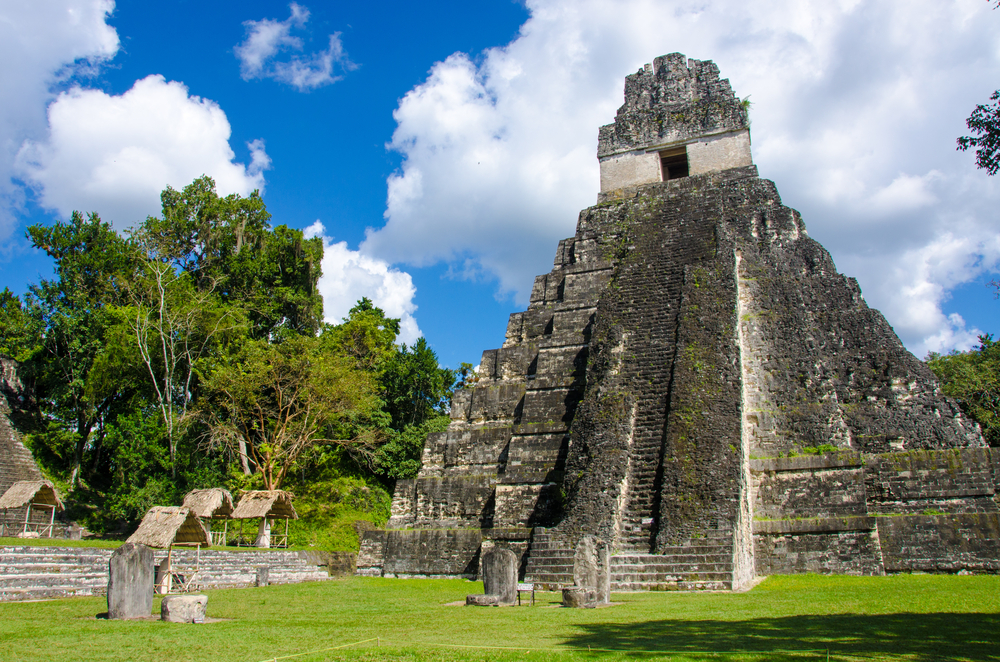Science Revealed The Maya World
The mysterious Maya city of Tikal in north-east Guatemala has been on the Central American tourist trail for decades, and swells with visitors during the day. But it is 5am, and I am part of a television crew with permission to explore the ancient site before dawn.
The stars sparkle as, soupy from tiredness, we navigate with the help of headlamps. The background score is dominated by the tenors and sopranos of the insects and amphibians. We load up cameras and set off into the jungle, heading for the ancient city.
In its heyday, the Maya civilisation covered northern Guatemala, Belize, parts of Honduras and north-western El Salvador, plus all of south-eastern Mexico. The civilisation flourished for some 700 years, until the middle of the 10th century, when Maya city-states began to self-destruct. But their ruins still decorate the region, with Tikal a prime site.
From the gloom, moss-clad pyramids rise above us; 1,500 years ago these architectural marvels represented the very apogee of the Maya civilisation.
At the top of the highest, above the jungle canopy, we film dawn – all milk and turmeric. As howler monkeys roar, the limestone obelisks of Tikal’s other pyramids pierce through the canopy like sharks’ fins through an ocean of dark jade.
Within hours the light will be harsh, the heat intense, the crowds overwhelming but right now it’s utterly intoxicating.
We’re here to make a documentary about a new research project which is transforming how the world sees the Maya. Because it turns out the same jungle that makes visiting sites like Tikal so beguiling has been concealing a civilisation far bigger than previously believed.
The project was born out of a realisation among archaeologists working in Guatemala that aerial laser technology, called LiDAR, could be used to “see” beneath vast tracts of unexplored jungle. “Light Detection And Ranging” works by firing billions of laser beams from a plane flown above the trees and measuring the time it takes the beams to bounce back.
The largest study of its kind ever conducted surveyed a swathe of northern Guatemala jungle the size of, yes, Wales.
What would have taken decades using traditional techniques on the ground was done in just 50 hours from the air. With a lot of computing muscle and human expertise, scientists create a map of the jungle floor.
Stripped of the jungle canopy, two millennia of Maya civilisation have been laid bare for the first time. The results are simply jaw-dropping; so far more than 60,000 previously unknown structures have been identified; entire cities found hiding beneath the jungle and an extensive transport network revealed linking the cities.
Even at Tikal, the Maya site studied more than any other, there have been surprises. Just yards from a path trodden by dozens of tourists, what was thought to be a natural hill is now revealed as a pyramid. Its position and shape suggest to the archaeologists that it could contain the tomb of a high-ranking Maya noble.
But perhaps the most eye-catching of all the discoveries to come out of the LiDAR survey is the sheer scale and density of the settlement.
Tikal is revealed to be at least four times bigger than previously thought. It was a Maya megacity. For years, archaeologists have believed that population in the Maya world peaked at perhaps two million. That has been revised upwards by a factor of 10.
Science has created a treasure map, pointing the way to new discoveries on the ground. For the Guatemalan authorities there are the challenges and opportunities embodied in becoming custodians of an ancient civilisation bigger, more sophisticated and more complex than anyone previously thought.
For travellers, the next few years will be full of revelations, enticing more tourists than ever to discover Tikal. So a word of advice: come to the ruins at the bookends of the day when the light is soft, the temperature kind, the crowds sparse and the magic close.
The archaeological site of Tikal opens 6am-6pm daily. It is most easily reached from Belize by road or from Guatemala City by air

